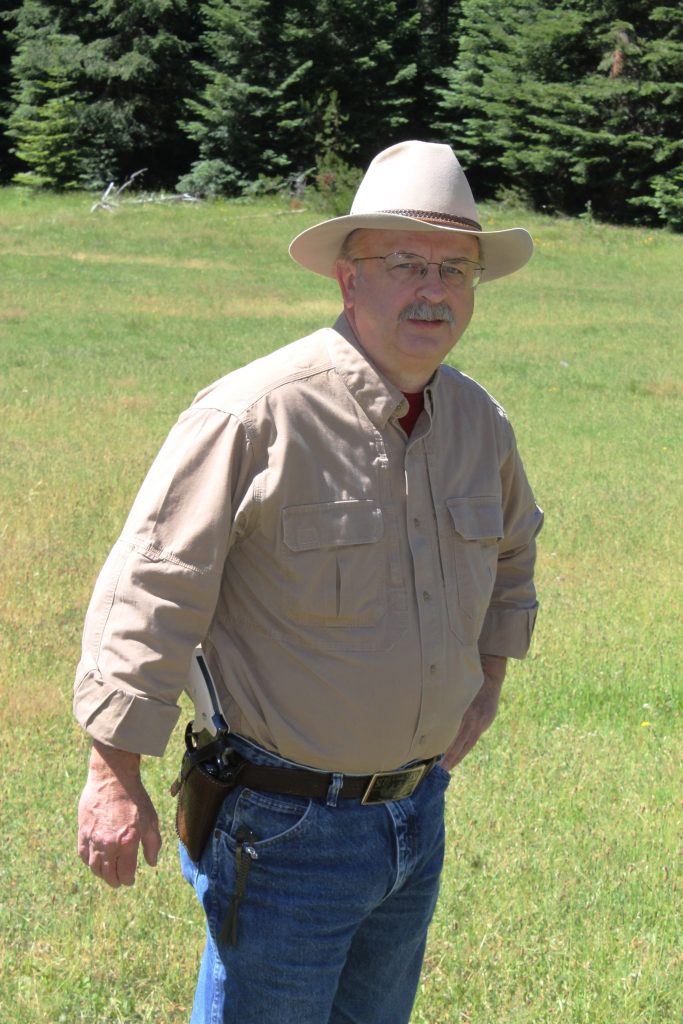
By Dave Workman
Editor-in-Chief
When two top names in the shooting world start talking about the pros and cons of open versus concealed carry on the same day, it’s worth paying attention.
Retired Texas Sheriff Jim Wilson, who is also an accomplished gun writer, did a short essay for “Shooting Illustrated,” in which he observed, “The vast majority of U.S. states allow the open carry of defensive handguns under one provision or another of their individual law. What is interesting is the amount of discussion and debate that this freedom has created among defensive shooters.”
Wilson’s discussion was followed up, and expanded upon, by Richard Mann, another veteran gun scribe, writing at his substack blog “Empty Cases.”
In his much longer essay, Mann wrote, “I believe there are times when open carry is OK, and I also believe there are times when open carry is a bad idea. You might be of the mind that since open carry is legal in your location that you should do it no matter what, and that if questioned by civilians or the cops, you should just proudly proclaim it’s your right and that you’re completely legal. That’s the activists’ approach, and it can be as politically effective as it is politically and personally problematic.
“The real problem with open carry,” Mann states, “is that it is a problem at all.”
For years, there has been an active, and gradually growing, open carry movement with activists all over the map. Among anti-gunners, and even some gun owners including self-defense advocates, open carry has been criticized as little more than exhibitionism. Some open carriers over the years have posted videos of encounters they have had with law enforcement. This movement even has its own website, OpenCarry.org.
As Wilson noted in his commentary, the “vast majority” of states allow open carry for personal protection “under one provision or another” in each state’s statutes.
“Some think that open carry is virtually the only way to go,” Wilson explains. “Others like it under certain circumstances, while others think it is a real mistake for the armed citizen.”
In the early days of the nation, through westward expansion and particularly west of the Mississippi River, it was fairly common to see people packing firearms, as they were typically considered everyday tools for everything from subsistence hunting to predator control, and in places where the nearest law might be a couple of days’ ride—if it existed, at all—the gun was often all that stood between its owner and eternity.
Back in the day, it was often considered that the only people who carried concealed sidearms were scoundrels, criminals and other “undesirable elements.” Then things slowly began to change. We started getting civilized, and as Mann observed, “Those on the anti-gun side of the aisle are staunchly against open carry because it makes them uncomfortable.” And he asks the proverbial $64,000 question: “Why does seeing another person with a gun have such a chilling impact on so many people?”
Why, indeed?
After all, Mann noted, police open carry, so the sight of a sidearm in public should not be all that unsettling. Perhaps it’s the uniform and the badge, but in practical terms, the police are civilian law enforcement.
Perhaps it has at least something to do with the manner in which the defensive firearm is carried. People who carry a sidearm unobtrusively—that is, they go about their business as usual without bringing attention to the fact they are armed—often go through the day with very few people actually noticing. It often depends upon location and circumstances, of course; a man walking through downtown Seattle carrying an N-frame Smith & Wesson .44 Magnum will likely get much more attention than a fellow pumping gas in McCall, Idaho.
If you’re openly carrying a sidearm, it’s probably to your advantage to draw as little attention to yourself as possible.
By a slight majority (29-21), permitless carry, better known as “constitutional carry,” is the law in over half of the states. Time will tell whether such newly-restored freedom is a good or bad thing, and no doubt advocates on both sides of the debate will provide their own data to show they’re right and the other side is wrong.



